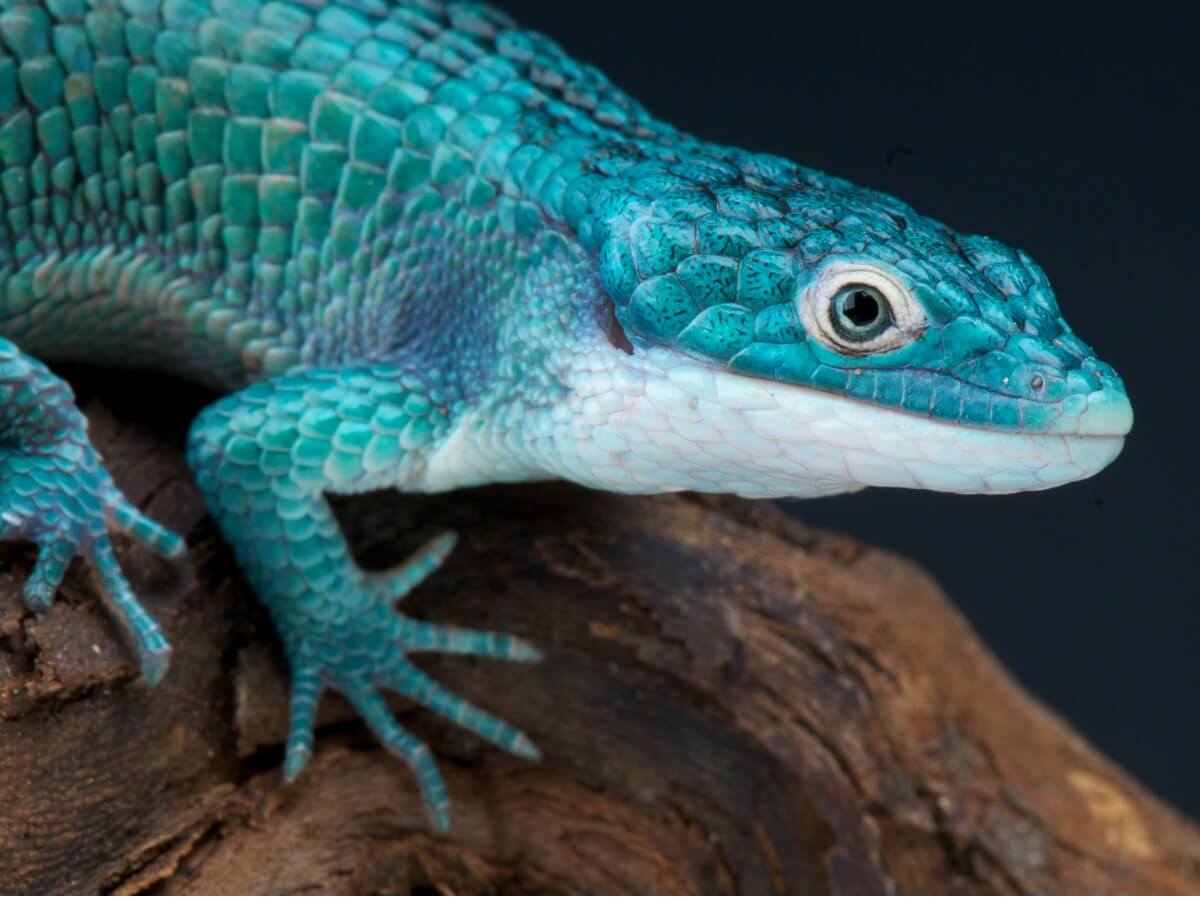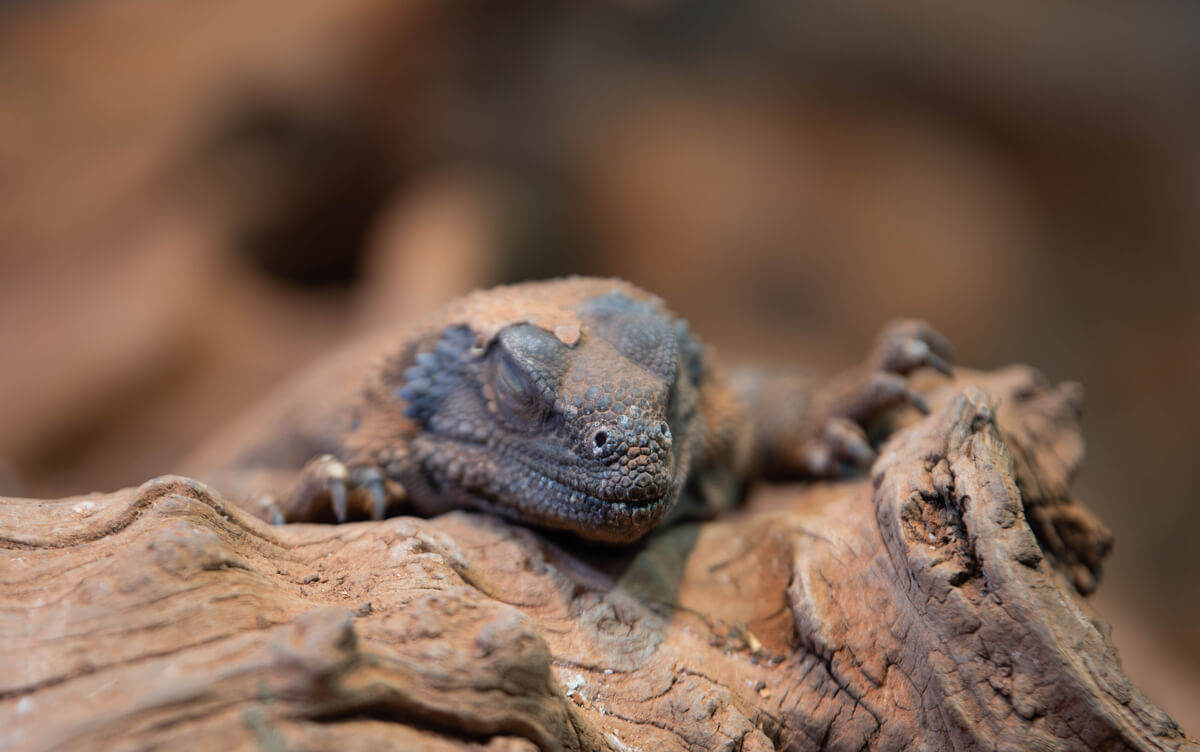Hypothermia in Reptiles: Causes, Symptoms and Treatment

Keeping exotic animals is becoming more and more common. However, they’re usually quite delicate animals with specific care needs. Have you ever heard about hypothermia in reptiles?
This condition is common in exotic pets belonging to first-time owners, because it can be difficult to find the exact temperature required by the species in question. It’s a fairly serious clinical condition and should be treated immediately. Read on if you want to find out more about it.
Reptiles are ectotherms
First of all, we’d like to describe the physiological traits of reptiles that make them prone to hypothermia. To do this, we must briefly dissect what is meant by their status as ectotherms. This term doesn’t only apply to snakes, turtles, and lizards, because amphibians, fish, and invertebrates also fall into the ectotherm group.
Ectotherm animals (regardless of the taxon they belong to) aren’t able to generate their own heat by any metabolic or physiological process. This means that they depend on the environmental temperature to increase or decrease the speed of the processes that occur inside their body. The higher the temperature, the more basal activity.
As reptiles don’t generate internal heat, they generally require less caloric intake than mammals or birds, as they tend to have slower metabolisms in some parts of the day (or at certain times of the year). However, this adaptation has a clear disadvantage from an evolutionary point of view: if it’s very cold, a reptile can die in a short time.
The metabolic rate of reptiles is directly proportional to the ambient temperature.

Causes of hypothermia in reptiles
Hypothermia in reptiles is almost always caused by an error on the part of the keeper. Every species has a preferred optimal temperature zone and this depends on the area of origin and the ecosystem it occupies. If the required temperature of the animal in the home environment isn’t respected, then complications will soon arise.
For this reason, it’s necessary to be well informed before acquiring a reptile of any species. All reptiles require a thermal gradient, so you should place heating blankets underneath the terrarium and specific spotlights to create a basking spot in a specific area. In this way, the pet will be able to sunbathe every time its body temperature drops.
The temperature of the basking spot depends on the species, but usually ranges from 30 to 38 °C (86 to 100 F). The general temperature in the terrarium should hardly ever fall below 25 °C (77 F) during the day.
Symptoms
The symptoms of hypothermia in reptiles are quite obvious, but you should check your pet every day to be able to detect them. The most important are the following:
- Lack of activity and movement. The animal’s metabolism decreases drastically, so it literally has no energy to move or climb.
- Dehydration and weight loss. A hypothermic reptile will stop eating and drinking because it lacks sufficient internal heat to digest solid foods and liquids.
- Dull coloration. Some reptiles are capable of modifying their external coloration to absorb more or less heat. A dull color indicates that the animal urgently requires warm light.
- Low body temperature. All reptiles should have a warm belly during the day, as this indicates that they’re effectively absorbing heat from heat lamps and thermal blankets. A very cold belly area always indicates hypothermia.
As professional sources indicate, it’s possible to detect hypothermia in reptiles by gently pressing one of its feet with your fingertips. If the animal doesn’t react in any way, the condition is serious and requires immediate treatment.
Treatment of hypothermia in reptiles
If you notice these signs in your exotic pet, the first thing to do is to use a digital thermometer (you should always have it handy) to measure the temperature of the terrarium. If it’s less than 20-25°C (68 to 77 F) across the entire surface, it’s easy to suspect hypothermia. The heating blanket may have broken, or you may have underestimated its power in the first place.
At times like this, you can follow the following tips that will save your reptile’s life:
- Place warm water in a large bowl and gently place the reptile in it. Be careful not to cover the animal’s head or nostrils.
- Keep the reptile in the bath for 20-30 minutes, but remember to add slightly warmer water every few minutes. Otherwise, it will get cold and won’t do any good.
- Dry the reptile, wrap it in a towel and place a heating blanket (in this case for human use) under it. Start with lukewarm temperatures and turn the blanket up to the maximum value for the species in intervals (up to one hour). At this point, the normal heat that the animal is exposed to in the terrarium isn’t sufficient.
- While increasing the animal’s body temperature, adjust the terrarium temperature. This will allow you to introduce it immediately after it has reached its thermal maximum.
- Offer the reptile water when it starts to become more active. You may need a syringe to get it to drink.
It’s very important that you take the adaptability of the species into account during the process. If you put the reptile directly on a very hot blanket when it feels cold, it will probably suffer a thermal shock and diet. This is why you’ll need to follow the steps slowly and without getting impatient. Always start with warm heat sources and gradually increase.

Hypothermia in reptiles usually has a good prognosis, as almost all species recover after a few hours of thermal imbalance. If your pet doesn’t respond well to treatment, take it immediately to the vet. Another underlying disease may be the cause of the drop in its internal temperature.
All cited sources were thoroughly reviewed by our team to ensure their quality, reliability, currency, and validity. The bibliography of this article was considered reliable and of academic or scientific accuracy.
- Regal, P. J. (1967). suggests a reassessment of our theories” torpidity” in birds and mammals. concerning the evolutionary status of Voluntary Hypothermia in Reptiles. Science, 155(3769), 1551-1553.
- Hypothermia in reptiles, PETMD. Recogido a 13 de octubre en https://www.petmd.com/reptile/conditions/systemic/hypothermia-reptiles
- ¿What is hypothermia? Anapsid.org. Recogido a 13 de octubre en http://www.anapsid.org/iguana/hypothermia.html
This text is provided for informational purposes only and does not replace consultation with a professional. If in doubt, consult your specialist.